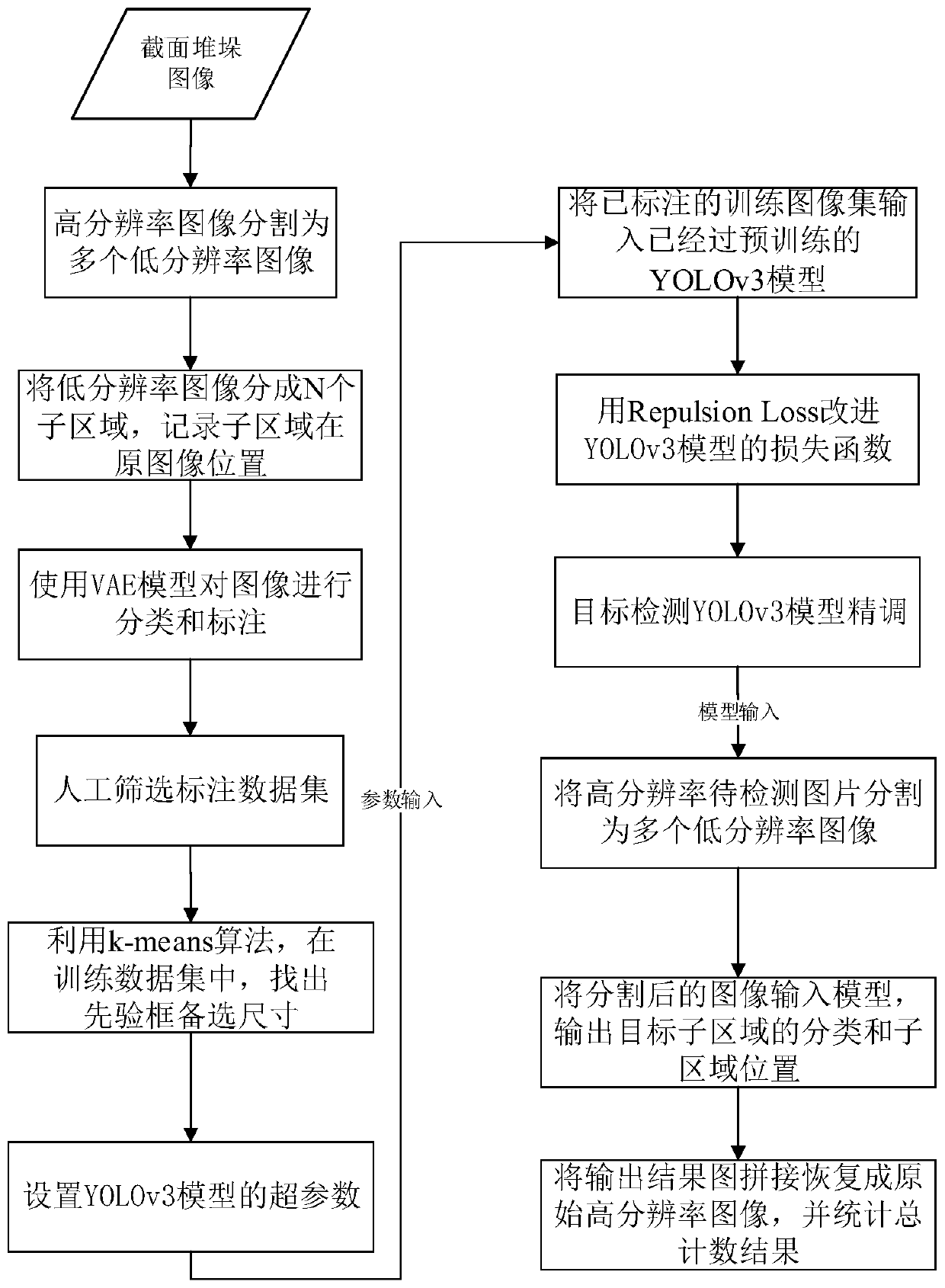Dense stacking target detection method based on automatic labeling and transfer learning
A target detection and automatic labeling technology, applied in character and pattern recognition, instruments, computer parts, etc., can solve the problems of high requirements and low practicability such as image quality, brightness, shooting angle, occlusion, etc., to reduce the huge workload The effect of improving training efficiency and improving recognition accuracy
- Summary
- Abstract
- Description
- Claims
- Application Information
AI Technical Summary
Problems solved by technology
Method used
Image
Examples
Embodiment Construction
[0014] Such as figure 1 As shown, the present invention provides a dense stacking target detection method based on automatic labeling and transfer learning, comprising the following steps:
[0015] Step 1, use the sliding window algorithm to segment the high-resolution stacking cross-sectional image into low-resolution images; then divide the low-resolution images into M R 0 × R 0 The sub-region set of pixels, and record the center point position data of each sub-region; using the variational autoencoder model, the target sub-region (such as steel pipe, steel, wood section) and non-target sub-region (such as background, void, shadow, incomplete section, etc.), and finally combined with the center point position data of the sub-area to realize the automatic labeling of the target sub-area. The specific steps are:
[0016] Step 1.1, use the sliding window algorithm to divide more than 500 high-resolution stacking cross-sectional images of not less than 2000*2000 pixels into N...
PUM
 Login to View More
Login to View More Abstract
Description
Claims
Application Information
 Login to View More
Login to View More - Generate Ideas
- Intellectual Property
- Life Sciences
- Materials
- Tech Scout
- Unparalleled Data Quality
- Higher Quality Content
- 60% Fewer Hallucinations
Browse by: Latest US Patents, China's latest patents, Technical Efficacy Thesaurus, Application Domain, Technology Topic, Popular Technical Reports.
© 2025 PatSnap. All rights reserved.Legal|Privacy policy|Modern Slavery Act Transparency Statement|Sitemap|About US| Contact US: help@patsnap.com



